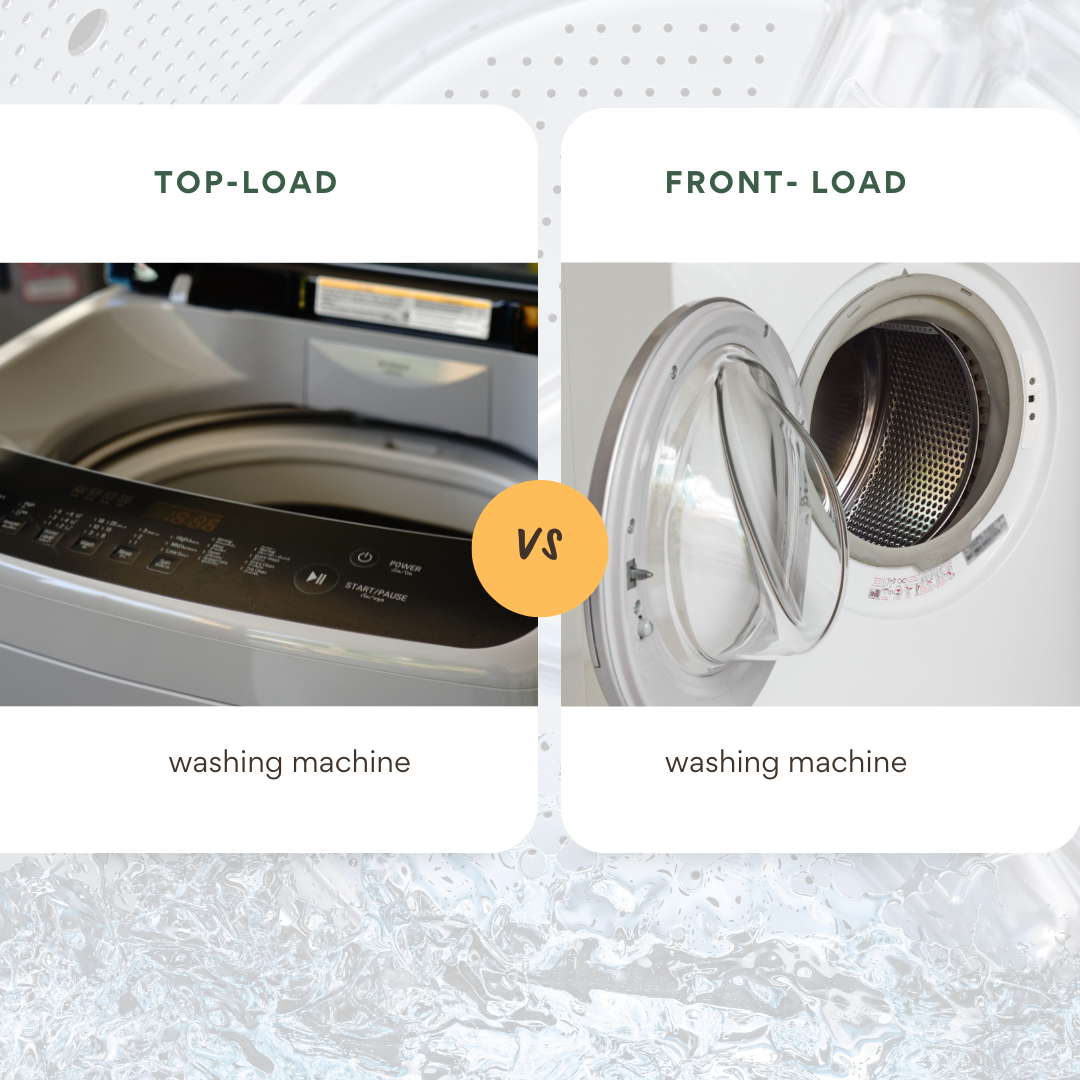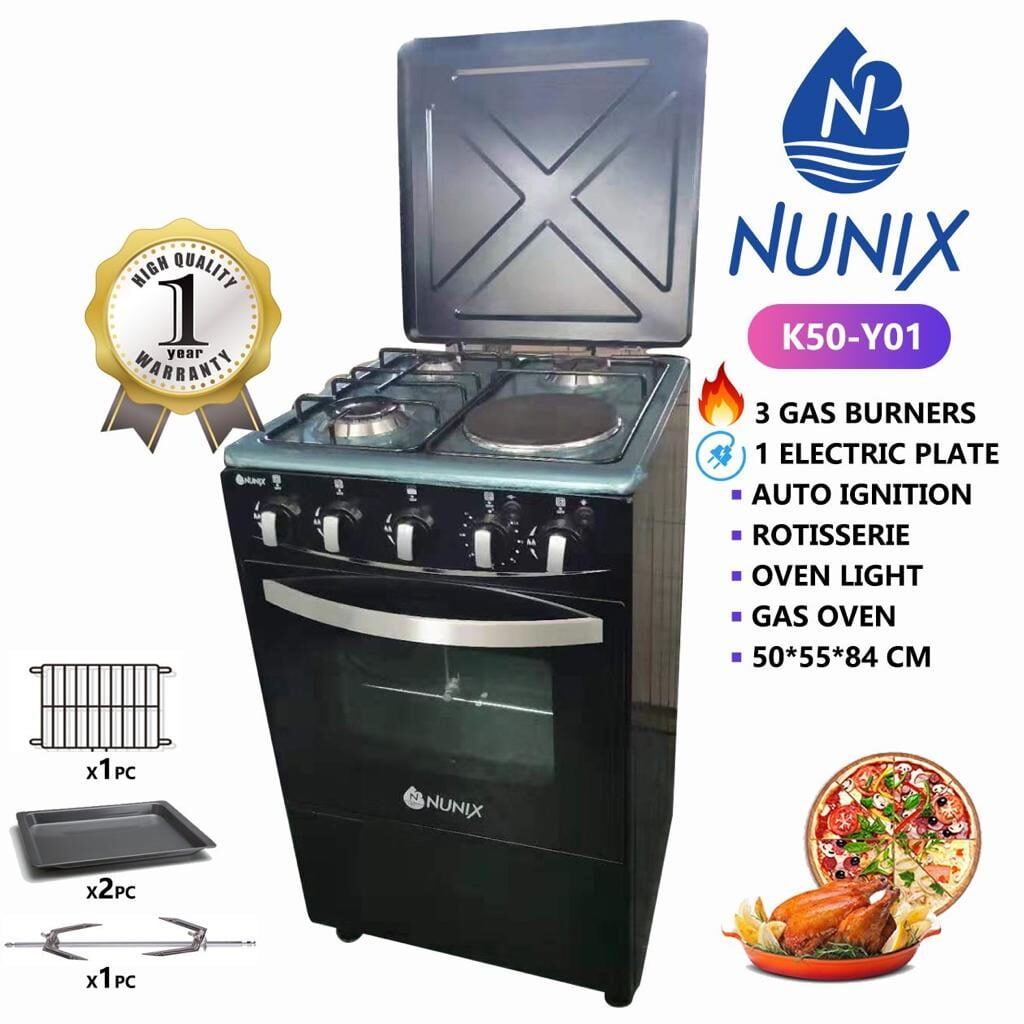Front load and Top load Washing Machines

Introduction
Choosing the right washing machine can significantly impact your laundry routine, and understanding the basic differences between front-load and top-load washing machines is essential. Front-load washing machines feature a door on the front, where clothes are loaded. These machines clean clothes by gently tumbling them in water, which tends to be more efficient in terms of water and energy usage. Front load washers are almost always fully automatic, providing a seamless and convenient laundry experience.
On the other hand, top-load washing machines have a door on the top, allowing you to load clothes from above. They utilize either an agitator or an impeller to clean clothes. The agitator is a central post that moves clothes vigorously, while an impeller is a low-profile mechanism that creates turbulent currents in the water. Top load washers can be either semi-automatic or fully automatic, offering different levels of automation and user interaction.
This article aims to help you understand the differences between front-load and top-load washing machines in detail and make an informed decision about which type of washing machine suits your needs best. By comparing various aspects such as performance, energy efficiency, convenience, and cost, you will be better equipped to choose between front-load and top-load washing machines. Whether you’re looking for a unit that saves on water and energy bills or one that offers ease of use and versatility, this guide will provide you with the necessary insights to make a well-informed choice when buying front-load and top-load washing machines.
Benefits of Using Front-load and Top-Load Washing Machines
When choosing between front-load and top-load washing machines, it’s crucial to understand the benefits each type offers to make an informed decision.
- Front-load washing machines are widely recognized for their superior water and energy efficiency. Due to their horizontal drum design, they require less water to operate, which translates to lower utility bills and a reduced environmental footprint. Additionally, front-load machines tend to have higher spin speeds, effectively removing more water from clothes, thereby shortening drying times and further conserving energy.
- Moreover, front-load washing machines are gentler on clothes. The tumbling action rather than the agitator used in top load washers ensures that garments undergo a less abrasive cleaning process, preserving the fabric’s integrity and extending the lifespan of your clothes. This feature is particularly beneficial for delicate items that require extra care during washing.
On the other hand, top-load washing machines offer their own set of advantages that cater to different needs and preferences.
- One of the most significant benefits is their larger capacity, making them ideal for washing bulky items such as comforters, blankets, and large loads of laundry. This can be particularly useful for families or households with high laundry demands.
- Top load machines also typically have faster wash cycles, allowing for quicker laundry turnaround times. This can be a major advantage for those with a busy lifestyle who need their laundry done promptly. Additionally, top-load washing machines generally come with a lower upfront cost, making them a more budget-friendly option for many consumers.
- Another important aspect to consider is the ease of loading and unloading. Top load machines allow users to add laundry without the need to bend over, which can be a significant benefit for individuals with mobility issues or back problems. This ergonomic advantage makes top-load washers more accessible and user-friendly for a broader range of people.
Top Load vs Front Washing Machine
Several factors come into play when choosing between front-load and top-load washing machines. These are:
1. Loading style
One of the most noticeable differences is the loading style. Front-load washers require you to load laundry from the front, while top-load washers have a lid on the top. This distinction influences not just how you interact with the machine, but also its overall capacity, cleaning method, and maintenance requirements.
2. Efficiency
Front-load washing machines use a tumbling action to clean clothes, which is generally gentler and more efficient than the agitation method employed by top-load washers. This tumbling action, combined with higher spin speeds, often results in better water and energy efficiency. Front-load washers typically use less water and extract more water during the spin cycle, reducing drying time and energy consumption. Conversely, top-load washers, especially those with agitators, may consume more water but often feature faster cycle times.
3. Capacity
Front-load washers tend to have larger drum capacities than top-load models, meaning they can handle bigger loads in one cycle. This makes them ideal for larger families or households that need to wash large items like bedding. Top-load washers usually have a smaller drum, limiting the amount of laundry that can be washed at once.
4. Cost
Cost is another critical factor to consider. Front-load washing machines generally have a higher upfront cost but can offer long-term savings through improved energy and water efficiency. Maintenance is also a consideration; front-load washers may require more frequent cleaning to prevent mold and mildew buildup. This is less of an issue with top load models, which are less prone to such problems.
5. Design
Ergonomics and aesthetics play a role in the decision as well. Top-load washers may be easier on the back as they eliminate the need to bend down, while front-load washers provide easier access to laundry without reaching deep into the drum. Both types offer high-efficiency models and smart features, including allergy cycles, to cater to specific needs. Ultimately, your choice will depend on your personal preferences and specific laundry requirements.
6. Maintenance
Top-load machines are easier to maintain because they have fewer parts that can break down. Additionally, they are less prone to mold and mildew since they don’t seal as tightly as front loaders. Front-load washers require more careful maintenance, especially cleaning the rubber gasket to prevent mold buildup. They may also require more frequent professional repairs, particularly for door seals and drum issues.
7. Gentleness on Clothes
Front-load washers are generally gentler on clothes. The tumbling action in front loaders is less abrasive than the agitation in many top loaders, especially those with a central agitator. Top load machines, particularly models with agitators, can be rougher on clothes, leading to more wear and tear.
8. Wash Time
Top load washers typically complete a washing cycle more quickly because of their simpler design and wash process. However, front-load washers take longer, as they rely on a more efficient but slower tumbling action. Despite the longer cycles, front loaders tend to offer better cleaning performance and are gentler on fabrics, which balances out the time trade-off.
Difference Between Top Load and Front Load Washing Machine
Here’s a table illustrating the differences between Front-load and Top-load Washing Machines:
| Feature | Top Load Washing Machine | Front Load Washing Machine |
|---|---|---|
| Design | Clothes are loaded from the top. | Clothes are loaded from the front. |
| Water Usage | Typically uses more water. | Uses less water, making it more efficient. |
| Energy Efficiency | Less energy efficient. | More energy efficient, especially with high spin speeds. |
| Wash Time | Shorter cycle time. | Longer cycle time but generally more thorough cleaning. |
| Capacity | Usually has a smaller drum size. | Larger drum capacity, allowing for bigger loads. |
| Price | Generally less expensive. | Usually more expensive upfront but saves in the long term. |
| Maintenance | Easier to maintain and repair. | May require more frequent maintenance, especially for seals. |
| Gentleness on Clothes | Can be rougher on fabrics. | Gentler on clothes, reducing wear and tear. |
| Space Requirements | Requires more vertical space but less floor space. | Requires more horizontal space but can be stacked with a dryer. |
| Vibration | Less vibration during operation. | Can vibrate more, especially on unbalanced loads. |
| Spin Speed | Lower spin speed, leading to more water remaining in clothes. | Higher spin speed, which extracts more water. |
| Detergent | Can use regular detergent. | May require special high-efficiency (HE) detergent. |
| Ease of Use | Easier to load and unload for people with back problems. | Requires bending or crouching to load and unload clothes. |
Choosing the Right Washing Machine for Your Needs
When selecting between front-load and top-load washing machines, it is crucial to consider your specific needs and preferences.
Size – One of the primary factors to evaluate is the size of your household. For larger families, a front-load washing machine might be more suitable due to its higher capacity, allowing you to wash more clothes in a single cycle. On the other hand, a top-load washing machine can be a more practical option for smaller households or individuals, providing adequate capacity without occupying too much space.
Types of laundry – The types of laundry loads you typically handle also play a significant role in your decision. If you frequently wash bulky items such as comforters and blankets, a front load washer, known for its superior drum capacity and gentle washing action, might be more effective. Conversely, for regular loads of everyday clothing, a top-load washer can provide quick and efficient results.
Budget – Budget constraints are another critical aspect to consider. Front-load washing machines often come with a higher initial cost but may offer long-term savings through energy and water efficiency. Top load washers are generally more affordable upfront, making them a viable option for those with a limited budget. However, they may consume more water and energy over time.
Space availability – Space availability within your home is an important consideration as well. Front-load washing machines typically require more space due to their design, where the door swings outwards. If you have limited space, especially in an apartment setting, a top-load machine might be a better fit due to its compact and upright design.
Ergonomics and aesthetics – These should not be overlooked in your decision-making process. Front load washers can be easier on the back since they allow for easier loading and unloading without the need to bend down. Aesthetic preferences also come into play; front-load machines often offer a sleek, modern look, while top-load machines maintain a more traditional appearance.
Conclusion
In conclusion, both top-load and front-load washing machines offer distinct advantages that cater to different user preferences. By thoroughly understanding the key differences, benefits, and limitations of each type, you can make an informed decision that best meets your laundry needs and priorities. Happy Shopping !!


